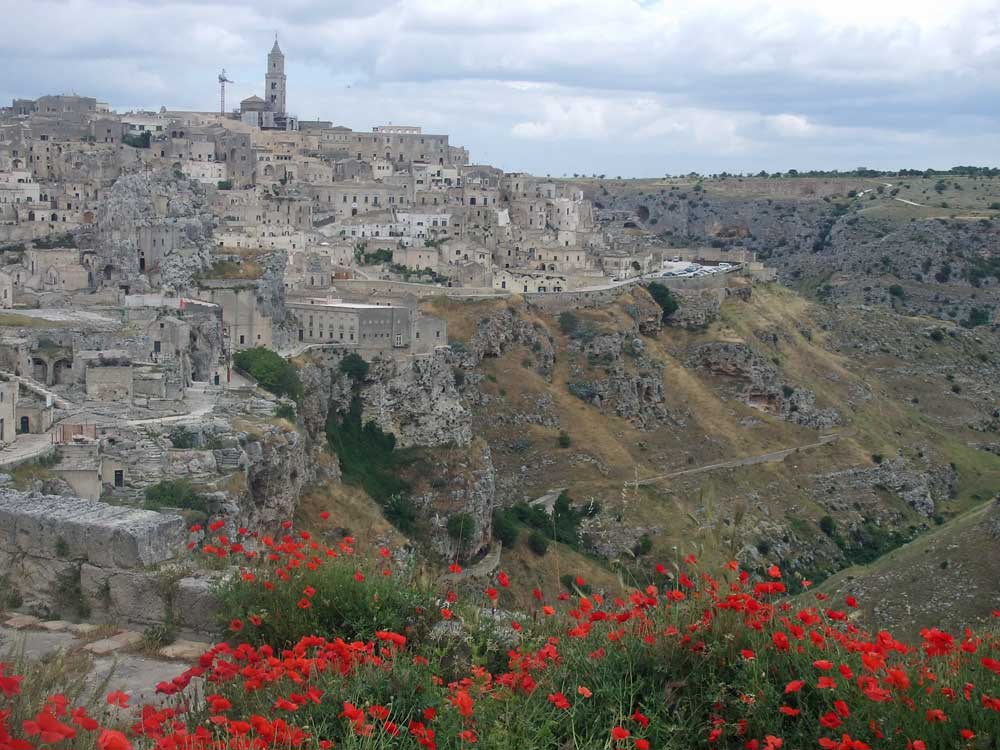The region of Basilicata in the south of Italy is not particularly well-known to tourists, but it has a couple of wonderful tourist destinations as well as dramatic, mountainous scenery and a national park. There’s lots to discover, and the region combines well with its neighbour Puglia for a touring holiday.
About Basilicata
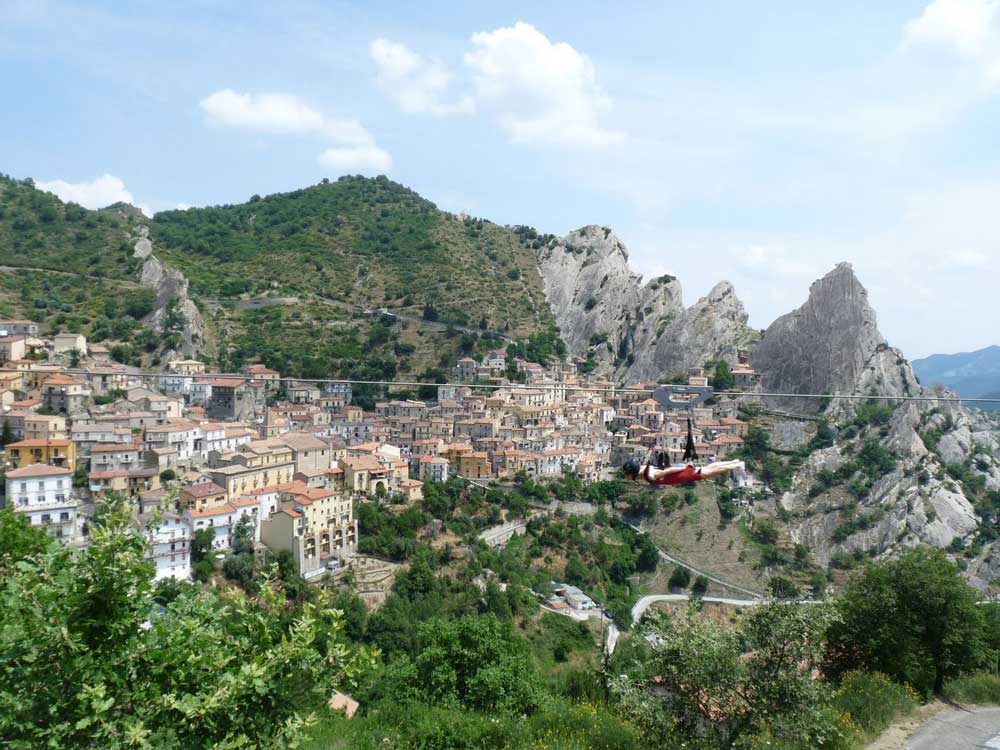
Basilicata, sometimes called by its historic name Lucania, is a region in Italy’s far south. It is an interesting and varied region, with some dramatic scenery. Basilicata covers a large area above the instep of Italy’s boot, with two short stretches of coastline; one on the Ionian Sea (the instep) and the other on the western, Tyrrhenian shore. It shares borders with the other Italian regions of Calabria, Puglia and Campania. Basilicata is sparsely populated and is divided into just two provinces, the Provincia di Potenza and the Provincia di Matera. Potenza is the regional capital.
Although it is still not a major tourist destination, Basilicata does contain two particularly fine spots which attract travellers: Matera and Maratea. These two towns are among Italy’s best destinations: fascinating, picturesque, suitably provided with good hotels and restaurants yet not overrun by visitors. Matera is famous for its atmospheric cave-dwelling districts, abandoned in the 1950s and slowly being brought back to life. Maratea is on the region’s west coast, and is a lovely little town high between the mountains and the sea. Much of the region is mountainous and bare due to deforestation, dotted with ravines, hilltowns and castles. Other interesting sights of Basilicata include caves decorated by Byzantine monks, and the ruins of Greek civilisation. Activites include swimming and diving, walking, cycling and horse-riding and even ski-ing in winter.
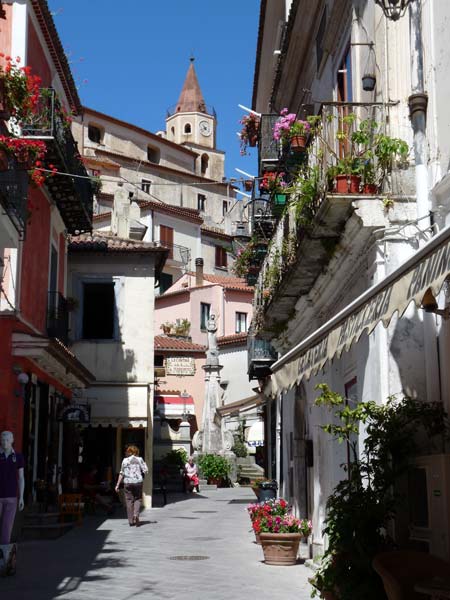
Visiting Basilicata
Even now that tourists are penetrating further into Italy’s south, Basilicata is still off the beaten track. The cave-town of Matera has become a fixture of enterprising tours, and Maratea is chic and well-connected, but the rest of Basilicata is remote and unknown by tourist standards. Public transport coverage isn’t great; if you want to explore the region you’ll find it much easier to hire a car. Learning some Italian phrases will be useful, as well as a good map and an adventurous outlook.
If you prefer a more traditional touring holiday, and seeing some of the highlights of the south, consider combining Basilicata with the more popular neighbouring regions of Puglia, Calabria and Campania. There is a railway line between Bari, in Puglia, and Matera, which means that Matera and its surroundings can combine well with an exploration of Puglia. Maratea is on the Tyrrhenian coast, sandwiched between Campania and Calabria and on a railway line running all the way down the western side of the country.
History and background
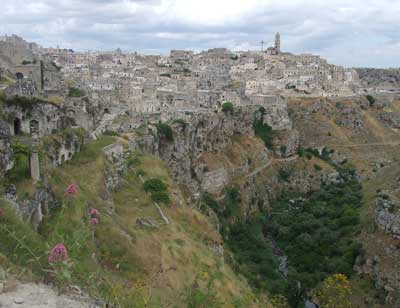
Basilicata is known as one of the poorest regions of Italy and by the middle of the twentieth century much of its population had emigrated in search of a better life in northern Italy or overseas. The arid landscape, backwards culture and primitive living conditions were portrayed forcefully and famously by Carlo Levi, and reading his work (see below) is a good preparation for visiting the region. For an earlier portrayal of the south, try finding or downloading a copy of Norman Douglas’s Old Calabria.
Carlo Levi and Basilicata in the 1930s
In the 1930s the doctor, writer and artist Carlo Levi was ‘exiled’ by the Fascist regime, and kept in confinement within the village of Aliano in Basilicata. After the war he published an account of his time in Basilicata and his observations: the poverty, superstition and harshness of everyday life. He titled it Cristo si è fermato a Eboli (Christ stopped at Eboli) – Eboli is a town further north in Calabria, where both the railways and the major roads came to an end, and the title expresses both the pagan superstition and the sense of abandonment current in the deep south. Modern Italians were shocked by his book – a bestseller – and particularly by his descriptions of Matera. He quotes his sister, visiting from Turin, who was appalled by the hopeless peasants of Matera, and the small children who followed her begging for quinine to relieve malaria. Levi maintained his links with the south throughout his life, and a good selection of his paintings is on display in Matera, while Aliano is a tourist destination for keen readers of Levi’s work. His book is a classic, and a very good introduction to this part of Italy as it was only a few decades ago.
> Christ Stopped at Eboli – from Amazon.co.uk
Basilicata airports and travel
There are no tourist airports in Basilicata, and the most convenient Italian airport will depend on which part of the region you are visiting. Bari Airport in Puglia is a practical destination for visiting Matera. Naples is reasonably convenient for travelling to Maratea and the Tyrrenhian coast of Basilicata; Brindisi Airport is a possibility for the Ionian coast, and Lamezia Terme in Calabria is within reach of the Pollino.
Different railway lines run through the region and it is possible to visit the principal destinations using public transport, though for a thorough exploration of the interior a car will definitely be a better option. Matera is linked by railway line with Bari, in Puglia. The main railway line south from Naples to Reggio di Calabria travels along the western edge of the region, stopping at Maratea. By changing at Battipaglia on this railway line, you can take a train journey across Basilicata via Potenza to Taranto in Puglia. Various different bus companies provide services linking Basilicata’s towns, although information can be hard to obtain, and timetables not always convenient for tourists.
Basilicata tourist destinations
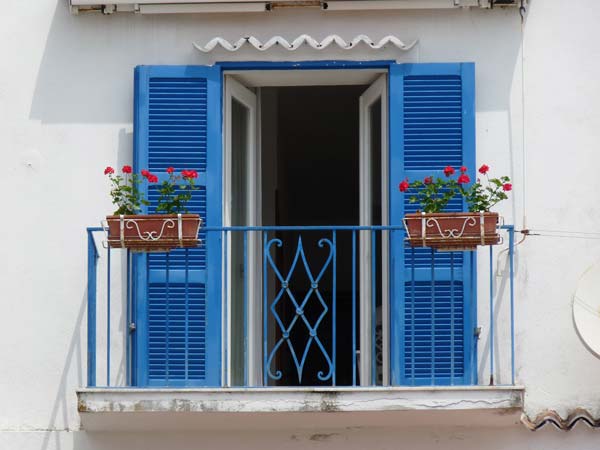
Matera is fascinating and atmospheric, and perhaps the most unusual, evocative place to visit in Italy. The cave districts are partly restored, with comfortable cave-hotels and recreations of cave-dwelling life, but there are also abandoned grottoes to explore and rock-cut frescoed churches to visit.
Maratea is a small and pretty town on the slopes of a hill high above the Mediterranean. It’s a charming destination with some good accommodation and a range of things to see and do around the town and the little villages at sea-level below.
Although the region’s heritage has been damaged over the centuries by earthquakes, there are still archaeological sites dating back to the Lucanians, a native civilisation, to the Greek colonisation of southern Italy and the later Roman cities. Metaponto, by the Ionion coast, is close to the ruins of the Greek city of Metapontum. More ruins can be visited at Venosa (Roman Venusia) and Grumento (Grumentum). The extensive Archaeological Park of the Murgia, around Matera, is dotted with cave-churches, many decorated with ancient frescoes.
Aliano, the village described by Carlo Levi (he called it Gagliano), is a destination which will interest the book’s readers. The town has a literary park with an itinerary dedicated to Levi and the places described in his work, and a museum of rural life.
Other interesting destinations in Basilicata include Melfi, an ancient town with an imposing castle containing an archaeological museum, the picturesque hill-town Rivello and Potenza, the provincial capital. The Pollino National Park (Parco del Pollino) covers a large area, on the border with Calabria, and is a good destination for walking holidays.
Adventurous travellers can visit dramatically-situated villages like Pietrapertosa, high in the Lucanian Dolomites between Potenza and Matera. The certifiably adventurous can participate in the Flight of the Angel – Volo dell’Angelo – a zip-wire over a breath-taking drop between the picturesque mountain villages of Castelmezzano and Pietrapertosa.
Accommodation

Both Maratea and Matera have some very fine hotels which are modern, fresh and stylish. As the region is still developing as a tourist destination, you can find some good accommodation opened recently by enthusiastic hoteliers and B&B owners, and prices tend to be lower than in more popular parts of Italy.
> Locanda di San Martino, Matera – this is a lovely cave hotel with ‘bedrooms’ in refurbished cave-dwellings in a cliff face.
> Hotel Sant’Angelo, Matera – a four-star hotel with simple elegant rooms, some quite traditional, others in caves.
> Locanda delle Donne Monache, Maratea – a smart hotel in an old convent with a swimming pool and views over Maratea.
> More Basilicata accommodation
Basilicata destinations
Basilicata guidebook
The best guidebook to travel with is probably the Lonely Planet guide to Puglia and Basilicata. Since the two regions logically combine together for a touring holiday, it’s a useful area to cover. The writers clearly don’t know the area inside-out, but they have toured quite effectively and this is probably the best English-language guide you’ll find to the regions. The little town maps are particularly useful.
On this site
Hotel Locanda delle Donne Monache, Maratea – review
Locanda di San Martino – Matera hotel review
Useful external links
